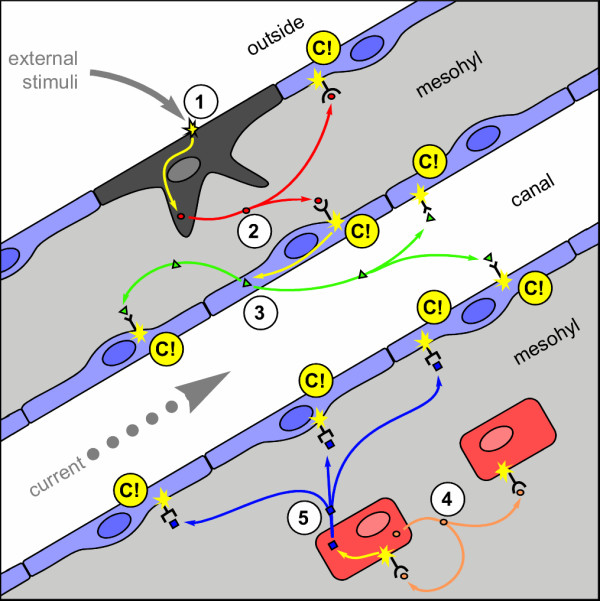Figure 8.

Hypothetical signalling pathways in Tethya wilhelma involved in coordination of contractions upon external stimuli and endogenous signals An external stimulus (1) at a putative receptor cell (grey) in the pinacoderm triggers the release of a signal substance (2) which diffuses through the mesohyle (light blue) of the sponge and triggers the contraction (C!) of contractile pinacocytes (blue) via a specific receptor and an intracellular signalling pathway. Eventually, stimulated pinacocytes release a second signal substance (3), which may further diffuse through the mesohyle or be distributed by currents in the canal system. Such a secondary signal would amplify the reaction speed upon external and internal triggering of contraction. The endogenous contraction rhythm may be controlled by numerous trigger cells (red) distributed in the mesohyle. These cells are supposed to release an auto-/paracrine signal substance (4), which diffuses through the mesohyle to coordinate the release of a signal substance (5), which diffuses to the pinacocytes and triggers contraction and eventually results in a signal amplification like shown in step (3). Signal substances (2) and (5) are likely not identical to allow independent specific coordination of contraction upon endo- and exogenous stimuli. See Additional file 8: Movie_S8.mov for a stepwise presentation of the hypothetical model.
